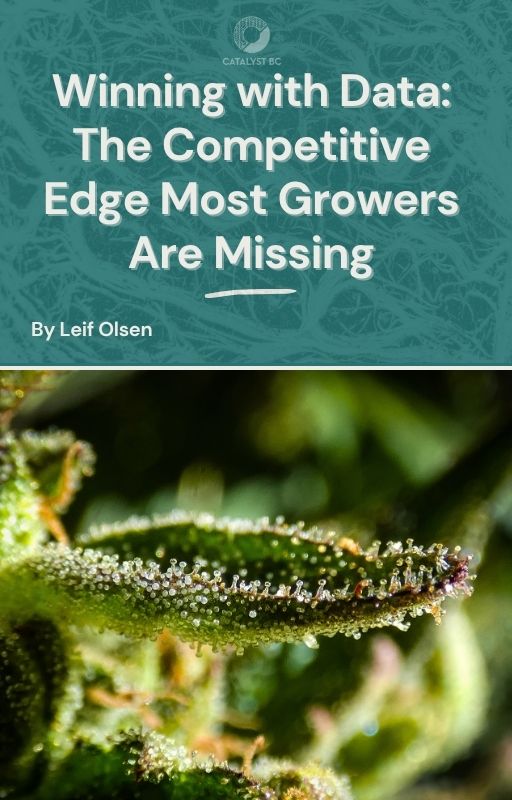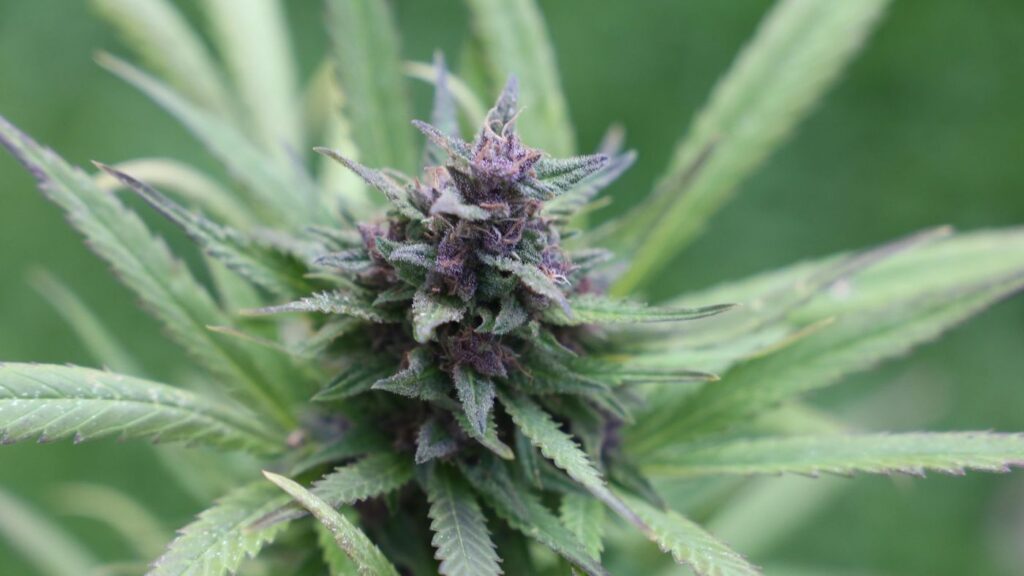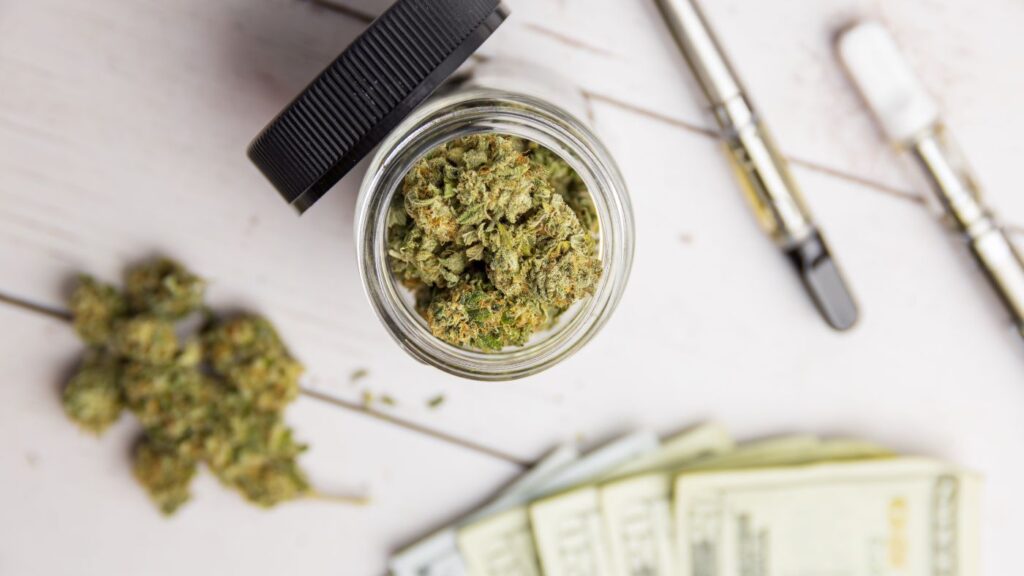Estimated reading time: 7 minutes
Table of contents
- Overview
- What Is UPM in the Cannabis Industry?
- The Financial Case for Maximizing UPM
- Revenue Diversification: Mitigating Market Volatility
- Enhanced Sustainability and Consumer Appeal
- Breaking Down the Cannabis Plant: Unlocking UPM
- Trim: The Workhorse of Extracts
- Stems and Stalks: An Industrial Opportunity
- Fan Leaves: A Nutritional Treasure Trove
- Roots: A Frontier for Innovation
- Strategies to Maximize Usable Plant Material
- Overcoming Challenges
- Conclusion
- Additional Resources
- Free eBooks For Cannabis Business Success
- Latest Articles

Overview
In the dynamic and competitive world of cannabis, the margin between success and stagnation is often razor-thin. A critical factor that can determine the trajectory of a cannabis business is UPM (Usable Plant Material). This term refers to the proportion of the cannabis plant that can be utilized for revenue-generating products. For cannabis businesses, understanding and maximizing UPM is not just an operational goal—it’s a financial imperative.
From the flower to the roots, every part of the cannabis plant holds potential. With the right strategies and tools, companies can tap into underutilized components, turning what was once considered waste into profit. This blog explores the financial significance of UPM, breaks down how to use every part of the cannabis plant, and provides actionable strategies for maximizing value while aligning with sustainability goals.
What Is UPM in the Cannabis Industry?
UPM (Usable Plant Material) encompasses all parts of the cannabis plant that can be processed into usable and sellable products. Traditionally, UPM focused primarily on flowers—the most lucrative portion of the plant. However, as the industry has evolved, so has the definition of UPM.
Today, UPM includes:
- Flower: The most potent and high-value part of the plant.
- Trim: The small sugar leaves and underdeveloped buds that remain after manicuring the flower.
- Fan Leaves: The large outer leaves, historically discarded but now used for edibles and beverages.
- Stems and Stalks: The fibrous material often considered waste but with applications in textiles, biofuel, and construction materials.
- Roots: Emerging as a valuable component in wellness products and research for medicinal applications.
The ability to transform these components into revenue streams is key to driving profitability and sustainability.
The Financial Case for Maximizing UPM
Cost Efficiency: Reducing Resource Waste
Cannabis cultivation is expensive. It requires significant investments in land, water, nutrients, labor, and energy. The more of the plant that can be sold, the better the return on these investments.
Example:
A grower harvesting 1,000 pounds of biomass with a UPM rate of 60% generates 600 pounds of sellable material. However, if the UPM rate increases to 80%, they now produce 800 pounds of sellable material—an additional 200 pounds that directly impacts revenue.
This efficiency reduces the effective cost per pound of usable product, improving overall profitability.
Revenue Diversification: Mitigating Market Volatility
The cannabis industry is susceptible to price fluctuations, especially for flower. By leveraging other parts of the plant, businesses can create diversified revenue streams that protect against market downturns.
- Flower: Premium smokable products command top dollar.
- Trim: A cost-effective input for concentrates, edibles, and infused pre-rolls.
- Stalks: Processed into industrial products like hempcrete, rope, or textiles.
- Leaves: Repurposed into teas, juices, and nutrient powders for edibles.
- Roots: Used in specialty wellness products like topical creams or herbal teas.
Enhanced Sustainability and Consumer Appeal
Consumers and investors increasingly demand sustainable practices. Demonstrating a commitment to reducing waste and maximizing UPM aligns with these values, enhancing a company’s brand reputation.
Businesses that adopt sustainability certifications or eco-friendly initiatives can also attract a loyal customer base and secure investment from socially conscious funds.
Stat: According to The Nielsen Company, 73% of global consumers say they would change their consumption habits to reduce environmental impact.
Breaking Down the Cannabis Plant: Unlocking UPM
Let’s explore each component of the cannabis plant and how businesses can maximize its potential.
Flower: The Crown Jewel
The flower remains the most profitable part of the plant, prized for its cannabinoid potency, terpene profiles, and aesthetic appeal. High-quality flower is sold as a smokable product or for premium extracts.
Strategies to Maximize Flower Yield:
- Use controlled environment agriculture (CEA) to optimize growing conditions.
- Employ training techniques like SCROG (Screen of Green) to increase bud exposure to light.
- Select genetics with high flower-to-leaf ratios.
Financial Impact: Premium flower can sell for $1,000–$3,000 per pound. Even a 5% increase in yield can translate to tens of thousands of dollars in additional revenue per harvest.
Trim: The Workhorse of Extracts
Trim may lack the aesthetic appeal of flower but is packed with cannabinoids and terpenes, making it ideal for concentrates, pre-rolls, and edibles.
Best Uses for Trim:
- Solvent-Based Extraction: To produce high-purity oils and distillates.
- Infused Pre-Rolls: Blended with flower for cost-effective smokables.
- Edibles: Incorporated into butter, oils, or tinctures.
Financial Insight: Trim-derived concentrates can generate over $10,000 per kilogram wholesale.
Stems and Stalks: An Industrial Opportunity
While stems and stalks are low in cannabinoids, their fibrous structure opens opportunities in industrial markets.
Applications for Stems and Stalks
- Hempcrete: A sustainable construction material gaining traction in green building projects.
- Textiles: Used for fabric, rope, and paper.
- Biofuel: Converted into renewable energy.
Stat: The global hemp fiber market is projected to reach $12 billion by 2030 (Grand View Research).
Fan Leaves: A Nutritional Treasure Trove
Fan leaves, often discarded, are rich in nutrients and antioxidants. They can be used in:
- Edibles: As an ingredient in teas or smoothies.
- Beverages: Cold-pressed juices or infused drinks.
- Topicals: Skincare and wellness products.
Emerging Trend: Cannabis leaf-based juices are becoming popular in health-conscious markets.
Roots: A Frontier for Innovation
Cannabis roots, rich in triterpenoids and alkaloids, are gaining recognition for their medicinal properties.
Potential Uses
- Topicals: Anti-inflammatory creams and salves.
- Teas: Herbal remedies for digestive issues.
- Research: Studying root compounds for new therapeutic applications.
Financial Insight: Root-based products, though niche, can command premium prices due to their novelty and wellness appeal.
Strategies to Maximize Usable Plant Material
Invest in Precision Cultivation
Use data-driven technologies like IoT sensors to monitor and optimize growing conditions, reducing plant stress and maximizing yield.
Upgrade Processing Capabilities
Invest in machinery that can efficiently extract cannabinoids from trim, stalks, and leaves, increasing overall UPM.
Innovate Product Development
Collaborate with R&D teams to create new products using underutilized plant components. Examples include hemp-based bioplastics or cannabis-root teas.
Focus on Sustainability
Adopt eco-friendly practices like composting unusable biomass and sourcing energy from renewable resources to align with consumer values.
Overcoming Challenges
While the potential benefits of maximizing UPM are clear, challenges remain:
- Regulatory Compliance: Varying regulations on cannabis products can limit the use of certain plant parts.
- Processing Costs: Advanced extraction and processing equipment requires significant capital investment.
- Market Education: Educating consumers about non-flower products like hempcrete or root-based wellness items is essential.
Conclusion
Maximizing usable plant material (UPM) is a cornerstone of financial and operational success in the cannabis industry. By utilizing every part of the plant, businesses can create diversified revenue streams, reduce waste, and position themselves as leaders in sustainability.
The future of cannabis lies not only in high-quality flower but in the innovative use of trim, stalks, leaves, and roots. With the right strategies, companies can turn every ounce of biomass into opportunity, achieving profitability while meeting the growing demand for eco-conscious practices.
Ready to optimize your operations? Contact Catalyst BC to learn how we can help your cannabis business achieve peak efficiency and sustainability.
Additional Resources
Free eBooks For Cannabis Business Success
Latest Articles
- Utah Medical Cannabis Pharmacy License Applications Open for 2025: Eligibility, Deadlines, and RequirementsThe Utah Department of Agriculture and Food (UDAF) has officially launched the first application period for two independent medical cannabis pharmacy licenses, running from July 1 through July 31, 2025. Originating from House Bill 54, passed during Utah’s 2025 legislative session, these new pharmacy licenses aim to broaden medical cannabis access in medically underserved areas across the state.
- Cannabis Startup Costs: From Licensing to ProfitabilityStarting a legal cannabis business isn’t just about getting a license—it’s about building a profitable, compliant, and sustainable operation in one of the world’s most capital-intensive and regulated industries. Many entrepreneurs enter this space with many goals, good intentions, and passion, but ultimately fail because they underestimate the cost, complexity, experience, and time required to turn a cannabis license into a thriving business.
- Cannabis License Pitfalls: How to Avoid Common Cannabis Licensing MistakesAs new adult-use programs launch, many entrepreneurs are eager to start growing, processing, or selling cannabis. Excitement runs high, but the industry’s heavy regulations and complex operations can quickly overwhelm even experienced business owners. Common mistakes include underestimating compliance requirements, rushing facility design, skipping proper procedures, and more.
- Maximizing Your Minnesota Cannabis Microbusiness or Mezzobusiness LicenseMinnesota’s new adult-use cannabis law allows microbusinesses (one store, up to 5,000 sq ft indoor, ½ acre outdoor) and mezzobusinesses (up to 3 stores, 15,000 sq ft indoor, 1 acre outdoor) to cultivate, manufacture, sell, and transport cannabis under one license. These vertically integrated licenses offer flexibility, but also come with complex state rules.
- The Recipe for a Top-Tier Cannabis DispensaryOperating a highly reviewed, top-performing cannabis dispensary takes more than simply stocking product and unlocking the doors. It requires operational discipline, regulatory expertise, top-tier customer service, dynamic merchandising, and a culture of accountability and community. With the cannabis industry continuing to expand—and regulations constantly evolving—success is defined by how seamlessly a dispensary integrates compliance, product curation, staff training, and marketing into day-to-day operations.
- Minnesota Lottery Results: June 5 Cannabis License Drawings and What’s NextThe Minnesota Lottery for cannabis business licenses reached a pivotal milestone on June 5, as the Office of Cannabis Management (OCM) conducted randomized drawings for select license types. These lotteries were open to both social equity applicants and general applicants vying for limited licenses to operate as cultivators, manufacturers, and mezzobusinesses. Additionally, a separate lottery was held exclusively for social equity applicants seeking a retail cannabis license.











